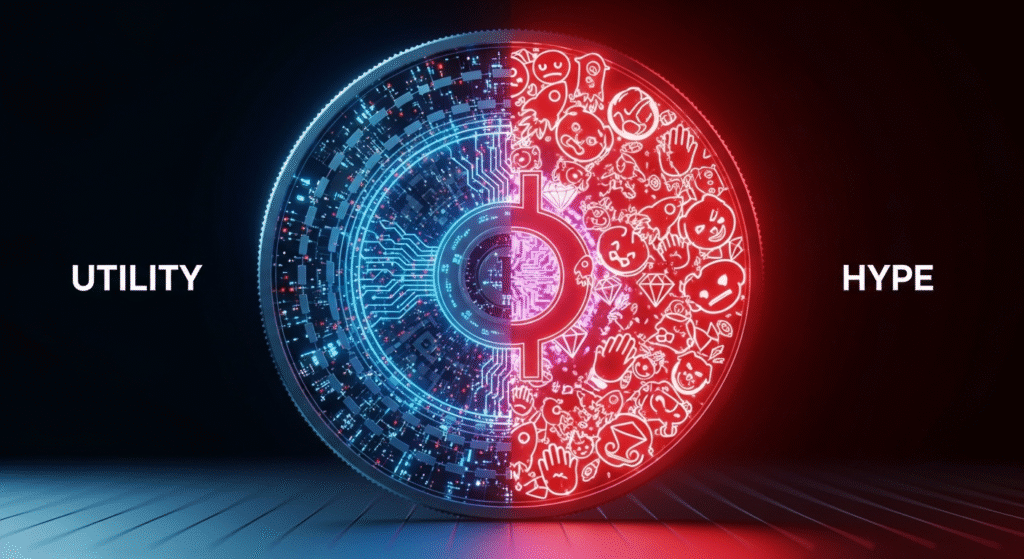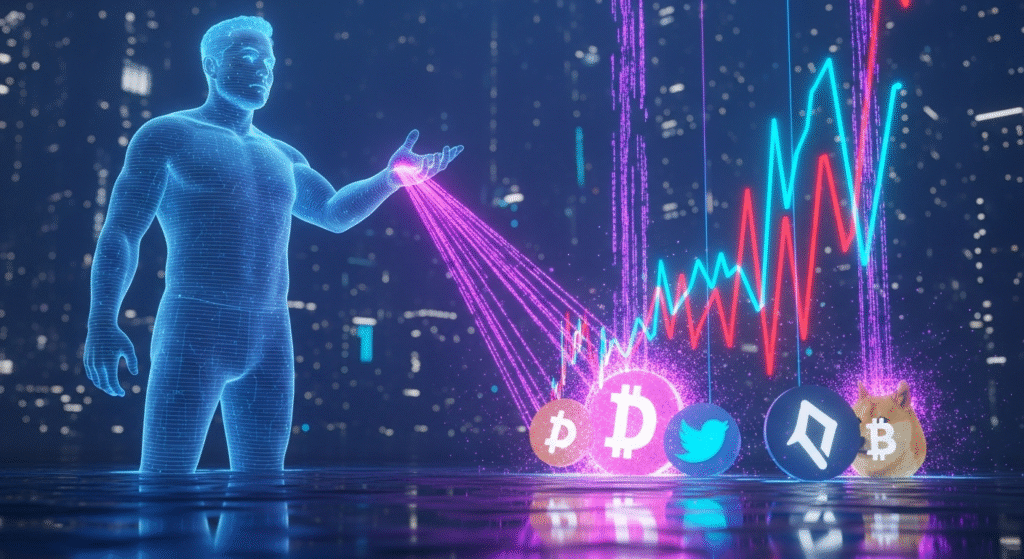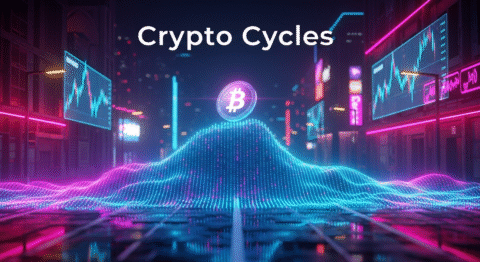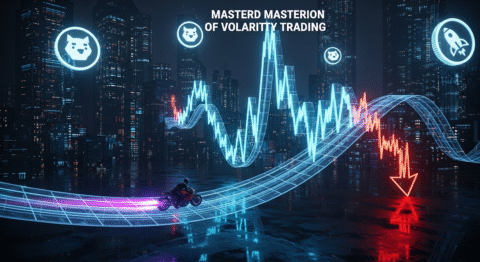V
Has the digital gold rush of the crypto market left you wondering if there’s a hidden roadmap to navigating the volatile seas of altcoins and meme coins? For those keenly observing the cryptocurrency landscape, particularly the meteoric rise and dramatic plunges of digital assets often influenced by public figures, a question lingers: Can we truly decode the subtle, yet powerful, impact of pronouncements from influential figures like Elon musk on the altcoin and meme coin sectors? It’s a question that strikes at the heart of understanding market sentiment, investor psychology, and the often-unpredictable nature of digital assets. In the intricate world of cryptocurrency,
The digital asset space is a vibrant, often chaotic, ecosystem where innovation meets speculation. Within this, altcoins and meme coins have carved out significant niches, capturing the imagination of investors and generating substantial buzz. Understanding the dynamics that drive these specific corners of the crypto market is crucial for anyone looking to participate or simply comprehend the broader financial revolution underway. This deep dive will not only explore the underlying mechanisms of these digital assets but will also uncover tangible strategies for how you can leverage insights, particularly those seemingly cryptic signals that E-Musk might be broadcasting through his prolific tweeting.
Crypto Market Overview
The cryptocurrency market in early 2024 presents a dynamic and evolving landscape. Following a period of considerable consolidation and adjustment, we’re witnessing a renewed optimism, especially within the altcoin sector. Bitcoin has reasserted its dominance, often acting as a bellwether for the broader market, but the real excitement for many lies in the potential of altcoins to offer significant upside. Market indicators suggest increased institutional interest and regulatory clarity, albeit still a work in progress, are slowly building confidence.
Altcoins, broadly defined as any cryptocurrency other than Bitcoin, are experiencing significant growth. Projects focusing on interoperability, scalability, and real-world applications are attracting considerable attention. DeFi (Decentralized Finance) protocols continue to innovate, driving demand for underlying tokens that power these ecosystems. The meme coin sector, while often characterized by its speculative nature and community-driven hype, has also shown surprising resilience and innovative marketing strategies. Projects like Dogecoin and its ilk have demonstrated that strong community backing and viral marketing can lead to substantial market caps, often amplified by endorsements, whether direct or indirect, from prominent figures.
Recent analysis shows a positive correlation between positive news narratives, technological advancements in various altcoin projects, and overall market sentiment. Airdrops, a popular method for distributing tokens to existing holders of certain cryptocurrencies or users who engage with new blockchain protocols, are also making a comeback. These events serve as powerful marketing tools and a way to bootstrap network effects for new projects. Tracking these trends—from the performance of blue-chip altcoins to the emergence of new meme coins and the strategic deployment of airdrops—provides a vital context for understanding where opportunity might lie and, crucially, how broader market influencers can impact these movements.

The Core Concept: How Altcoins & Meme Coins Actually Work
To truly appreciate the impact of figures like E,M, it’s essential to grasp the fundamental nature of altcoins and meme coins, and the mechanisms that underpin their existence.
What Are Altcoins / Meme Coins / Airdrops?
Altcoins, a portmanteau of “alternative coins,” represent any cryptocurrency that is not Bitcoin. When Bitcoin emerged as the first decentralized digital currency, it paved the way for countless others, each aiming to offer unique features, improve upon Bitcoin’s perceived limitations, or explore entirely new use cases. These can range from smart contract platforms like Ethereum (which famously enabled the creation of most altcoins and NFTs) to privacy-focused coins like Monero, or utility tokens that grant access to specific services.
Meme coins, on the other hand, are a subcategory of altcoins that often originate from internet memes or jokes. Their creation is typically community-driven, and their value is heavily influenced by social media trends, community sentiment, and, notably, endorsements from influential personalities. While they may not have the same underlying technological innovation or development roadmaps as many established altcoins, their viral potential and ability to mobilize large online communities can lead to significant, albeit often volatile, price movements. Projects like Dogecoin, originally conceived as a satirical cryptocurrency, and Shiba Inu exemplify the power and volatility of meme coins.
Airdrops are a distribution strategy where new crypto tokens are sent to cryptocurrency wallets for free. This is typically done for promotional purposes, to reward existing token holders, or to encourage the adoption and use of a new blockchain protocol. By distributing tokens widely, projects aim to increase their user base, decentralize their network, and generate community engagement. For recipients, airdrops can be a way to acquire new digital assets without initial investment, although the value of these tokens can be highly speculative.
Key Components & Technologies
The foundation of most altcoins and meme coins lies in blockchain technology. Blockchain is a distributed, immutable ledger that records transactions across many computers. This decentralization makes it resistant to censorship and fraud.
- Smart Contracts: Many altcoins, especially those built on platforms like Ethereum, utilize smart contracts. These are self-executing contracts with the terms of the agreement directly written into code. They automate processes, facilitate complex transactions, and are the backbone of decentralized applications (dApps) and DeFi.
- Proof-of-Work (PoW) vs. Proof-of-Stake (PoS): These are the two most common consensus mechanisms used to validate transactions and secure a blockchain. PoW, used by Bitcoin, requires miners to solve complex computational puzzles. PoS, used by many newer altcoins like Ethereum 2.0, requires validators to “stake” their coins to have a chance of being selected to validate transactions. This distinction impacts energy consumption, transaction speeds, and decentralization.
- Tokenomics: This refers to the economic design of a cryptocurrency, including its supply, distribution, inflation/deflation mechanisms, and utility. Well-designed tokenomics are crucial for a token’s long-term viability and value. For meme coins, tokenomics are often simpler, with a focus on large supplies and community incentives.
- Decentralized Finance (DeFi): A rapidly growing sector built on blockchain technology, DeFi aims to replicate traditional financial services (lending, borrowing, trading) without intermediaries. Many altcoins are integral to DeFi ecosystems, acting as governance tokens, utility tokens, or collateral.
Understanding these technological underpinnings is crucial because they dictate the functionality, security, and potential scalability of a given cryptocurrency, factors that can indirectly be influenced by the perception and confidence generated by key influencers.
The Data-Driven Perspective
To move beyond the hype, a data-driven approach is essential for understanding the true potential and risks within the altcoin and meme coin markets.
Market Data & Trends
Examining market data reveals significant trends that impact altcoins and meme coins:
- Altcoin Dominance: While Bitcoin often leads the market, altcoin market capitalization as a percentage of the total crypto market cap is a key indicator. When altcoin dominance rises, it suggests a rotation of capital into alternative assets, often driven by innovation and higher perceived risk/reward ratios. Data from CoinMarketCap and TradingView consistently show periods where altcoins outperform Bitcoin significantly.
- Meme Coin Volatility: Meme coins are inherently volatile. Their price charts often exhibit parabolic “memetic surges” followed by sharp corrections. However, even with volatility, the aggregate market cap of leading meme coins can reach billions of dollars, demonstrating a significant, albeit speculative, investor base.
- Airdrop Participation: The number of participants in major airdrops can be a proxy for network interest. Projects that announce substantial airdrops often see a surge in wallet activity and network congestion, indicating a temporary but potent boost in user engagement. Tracking the price performance of tokens received via airdrops post-listing is also crucial.
Over the past year, we’ve observed several key trends:
- The Rise of Utility-Focused Altcoins: Projects with clear use cases in sectors like AI, gaming (GameFi), and real-world asset tokenization have seen sustained interest and growth independent of broader market sentiment.
- The “Shilling” Effect: Data analysis of social media sentiment before and after celebrity tweets (most notably from E,M) often shows a direct, albeit temporary, correlation with price pumps for specific tokens. For instance, tweets about Dogecoin have historically led to significant price increases, as evidenced by numerous trading data analyses. The correlation between Dogecoin E,M related discussions and trading volume is particularly pronounced.
- Increased Sophistication in Airdrop Strategies: Projects are moving beyond simple token giveaways to more complex engagement mechanisms, rewarding active participation in DeFi protocols or community governance.
Tokenomics & Market Health
Analyzing tokenomics is critical for assessing the long-term viability of any altcoin or meme coin:
- Supply and Demand: A fixed or capped supply, combined with increasing adoption and utility, generally leads to price appreciation. Conversely, an infinite supply or large, unlocked token allocations can dilute value. Many meme coins have astronomically large supplies, making their individual token price very low, a psychological tactic that appeals to mass adoption.
- Distribution and Vesting: How tokens are distributed among the founding team, early investors, and the community is crucial. Vesting schedules, where tokens are released over time, prevent large holders from dumping their tokens on the market and crashing the price.
- Utility and Governance: Does the token have a clear purpose within its ecosystem? Does it grant holders voting rights or influence over the project’s future? Tokens with strong utility and governance features tend to be more robust.
For meme coins, tokenomics are often designed for virality and community engagement rather than intrinsic value. Large token supplies, deflationary mechanisms (like token burns), and staking rewards are common. However, the lack of robust utility is often a major vulnerability.
For example, while Dogecoin’s large and inflationary supply might be seen as a weakness from a traditional economic standpoint, its strength lies in its accessibility (low price per coin), its meme status, and the community’s embrace of its “shiba- Inu as a dog” persona, a narrative often amplified by E,M’s endorsements. The data shows that, despite its simple origins, Dogecoin has a massive circulating supply and a consistent, dedicated community that can react swiftly to perceived positive signals, including those from influential figures.
Risks, Challenges & Competition
While the allure of high returns in altcoins and meme coins is undeniable, navigating these markets comes with significant risks.
Risks of Altcoins and Meme Coins
- Extreme Volatility: The prices of altcoins and meme coins can fluctuate dramatically in very short periods. This means an investment can grow rapidly, but it can also lose a substantial portion of its value just as quickly.
- Security Vulnerabilities: Many new altcoin projects, particularly those operating on less established blockchains or using novel smart contract code, can be susceptible to hacks and exploits, leading to the loss of funds.
- Regulatory Uncertainty: The regulatory landscape for cryptocurrencies is still developing. Governments worldwide are grappling with how to classify and regulate digital assets, and new rules could significantly impact the value and legality of certain altcoins or meme coins.
- “Pump and Dump” Schemes: The speculative nature of meme coins and smaller altcoins makes them prime targets for manipulative “pump and dump” schemes, where a group artificially inflates the price before selling off their holdings, leaving other investors with losses.
- Lack of Intrinsic Value: Many meme coins lack fundamental utility or a clear development roadmap, meaning their price is almost entirely driven by speculation and social media sentiment, making them exceptionally risky investments.
How Do Altcoins & Meme Coins Stack Up Against Competitors?
When considering investing in altcoins or meme coins, it’s helpful to compare them against their peers and established giants like Bitcoin and Ethereum.
| Feature | Bitcoin | Ethereum | Typical Altcoin (e.g., Solana, Cardano) | Typical Meme Coin (e.g., Dogecoin, Shiba Inu) |
|---|---|---|---|---|
| Primary Purpose | Store of Value, Digital Gold | Smart Contracts, dApps, DeFi, NFTs | Varies: Scalability, Interoperability, Specific Use Cases (AI, Gaming) | Community Driven, Meme Status, Speculation |
| Technology | Proof-of-Work | Primarily Proof-of-Stake (after Merge) | Often Proof-of-Stake or variations; focus on speed and scalability | Varies; often built on existing platforms (e.g., Ethereum) or simple PoW |
| Volatility | High (compared to traditional assets) | High | High to Very High | Extremely High |
| Market Cap | Largest | Second Largest | Varies widely, from millions to billions | Varies, can reach billions |
| Community | Strong, technically focused | Large, developer-centric, diverse applications | Growing, project-specific focus | Passionate, meme-focused, often amplified by influencers like E,M |
| Influencer Impact | Moderate; largely driven by fundamentals and institutional adoption | Moderate; influenced by tech developments and DeFi trends | Moderate to High; project-specific news and partnerships are key | Extremely High; direct influence from figures like E,M can cause massive swings. |
| Risk Level | High | High | High to Very High | Very High to Extreme |
This comparison highlights that while meme coins like Dogecoin might be heavily influenced by public figures and community sentiment, more established altcoins, while still volatile, often have a stronger technological foundation and clearer utility, potentially offering more sustainable growth in the long run.
The Future Outlook
The trajectory of altcoins and meme coins is intrinsically linked to the broader evolution of blockchain technology and digital finance.
What’s Next for Altcoins / Meme Coins / Airdrops?
The future for altcoins appears bright, driven by ongoing innovation and increasing integration into various industries. We can anticipate:
- Continued Specialization: Altcoins will likely become even more specialized, catering to specific niches like decentralized AI, advanced gaming metaverses, supply chain management, and specialized DeFi applications.
- Interoperability Solutions: Projects focused on enabling seamless communication and asset transfer between different blockchains will gain prominence, addressing fragmentation in the ecosystem.
- Enhanced Scalability: As user adoption grows, the demand for faster and cheaper transactions will drive the development and adoption of Layer 2 scaling solutions and innovative blockchain architectures.
- Regulatory Clarity: As regulations mature, we may see more institutional adoption and a reduction in the “wild west” atmosphere, potentially benefiting well-regulated and fundamentally strong altcoins.
For meme coins, the future is less predictable and will likely remain tied to cultural trends and the influence of social media. However, we might see:
- Utility Integration: Some meme coins might attempt to integrate more utility, perhaps by launching NFTs, DeFi platforms, or gaming elements, to justify their valuations beyond pure speculation.
- Community Sophistication: Communities behind successful meme coins may evolve their strategies, becoming more organized in their marketing and development efforts.
- The Enduring Power of Meme Culture: As long as internet culture thrives, meme coins will likely continue to exist, offering speculative opportunities and a unique expression of online community. The ability of figures like E,M to tap into and amplify this culture will continue to be a significant factor.
Airdrops will likely remain a key strategy for new projects, but they may evolve to reward more meaningful engagement and commitment from users, moving away from simple token giveaways towards incentivizing active participation in the ecosystem.
Conclusion
Navigating the burgeoning world of altcoins and meme coins requires a blend of technological understanding, market analysis, and an awareness of the powerful, often unpredictable, forces that can shape their value. We’ve delved into the core mechanics of these digital assets, explored the critical market data and tokenomics, and underscored the inherent risks.
Crucially, the influence of key figures like E,M cannot be overstated. His tweets, often cryptic yet impactful, can serve as potent signals for those paying close attention. The secrets his tweets hold often relate to:
- Sentiment Amplification: His endorsement, even indirect, can dramatically boost community morale and attract new retail investors, leading to price pumps.
- Subjective Valuation: For meme coins especially, his pronouncements can act as a form of perceived validation, imbueing them with a status that transcends their technical underpinnings.
- Market Attention Shift: His commentary can draw significant global attention to specific cryptocurrencies, creating opportunities for projects that can harness this spotlight.
Remember, while these insights can be valuable, they are by no means a guarantee of profit. Always conduct your own thorough research (DYOR), understand your risk tolerance, and never invest more than you can afford to lose.
What are your thoughts on the impact of influencers on the crypto market? Have you ever made a trade based on news or social media sentiment? Share your experiences and predictions in the comments below! To stay ahead of the curve and unlock more insights into the dynamic world of cryptocurrency, make sure to subscribe to our newsletter for regular updates and expert analysis.
FAQs
Q1: How can I identify a potentially good altcoin before it blows up?
Research the project’s whitepaper, the team behind it, the problem it aims to solve, its tokenomics, and its community engagement. Look for utility, a strong development roadmap, and a clear competitive advantage.
Q2: Are meme coins a good investment?
Meme coins are highly speculative and extremely risky. Their value is primarily driven by social media trends and influencer endorsements, not by intrinsic utility or underlying technology. Invest with extreme caution and only with funds you are prepared to lose entirely.
Q3: How often should I check for E,M’s tweets regarding crypto?
While it’s impossible to predict when or if E,M will tweet about crypto, actively monitoring his feed can provide timely insights into potential market sentiment shifts, especially for coins he has previously discussed, like Dogecoin. However, basing investment strategies solely on his tweets is highly discouraged due to their unpredictable nature.
Q4: What is the difference between an altcoin and a utility token?
An altcoin is any cryptocurrency other than Bitcoin. A utility token is a type of cryptocurrency designed to provide users with access to a specific product or service within a blockchain-based network. Many altcoins function as utility tokens.
Q5: How do airdrops work, and are they always free money?
Airdrops are usually free distributions of tokens, often as a marketing strategy or to reward existing holders of another cryptocurrency. While the tokens are given away, their market value can be highly volatile, and there may be conditions attached to receiving them. It’s not guaranteed profit.






